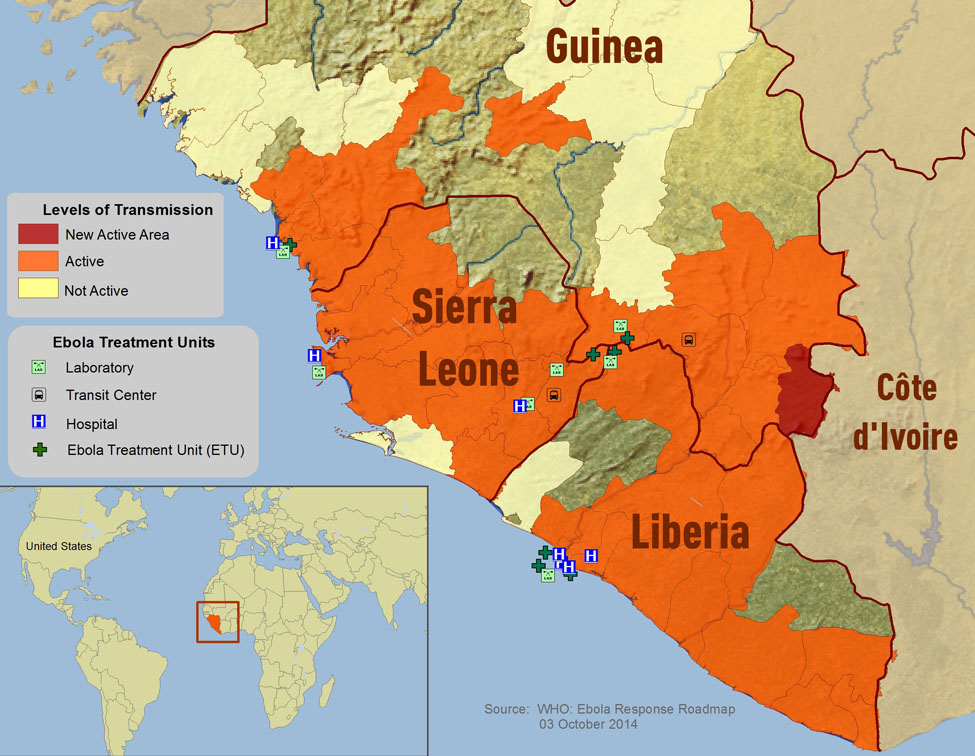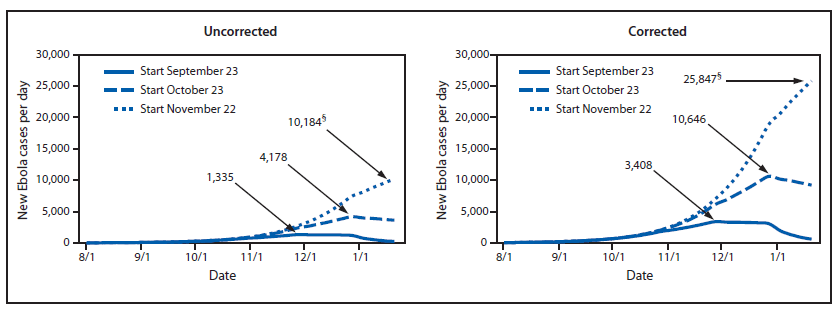I posted last week that we need to move to full-scale military mobilisation if we are going to stop the current Ebola outbreak. After having some discussions about this on HN I thought that I should explain in more detail why we need to use the military and why we need full-scale mobilisation.
Scale of Problem
The problem is far beyond what any non-military organisation can deal with. This recent post from Les Roberts who is leading the WHO response in Freetown, Sierra Leone explains the scale of the problem.
The prediction landscape is looking bad. The official numbers reported are laboratory confirmed cases. Typically, we think people need 7-10ish days to become symptomatic. Typically people have symptoms for 7 days before they get into a health facility. A month ago, it was one day, now it typically takes 4 days from when a patient is sampled to when the patient is told the result of their test (and lots get lost and mislabeled….). Thus, the numbers that you hear about new cases today reflect the transmission dynamics from over 2 weeks ago…..and we thought the doubling time of the outbreak was 30 days, it seems to be less than that here. We knew the ~350 confirmed cases last week were an undercount….we now think there are 7-900 in reality. The need for hospital beds is climbing more than the ability to get them up and running. There might be 200ish ebola treatment beds now countrywide. There are perhaps 600 more in “holding areas.” We have schemes to get 500 or 600 ebola treatment beds up and running over the next 8 weeks. As Foreign Medical Team Coordinator, helping to get these beds up and supported is one of my primary tasks. If there are really 3000 cases this month, and 6000 next month…with all going perfectly on the treatment bed establishment side, we will have 30% of the beds we need next month, slightly worse than the situation now.
Need for effective quarantine
If we are going to get on top of the outbreak we need effective quarantine in the affected areas. Given the geographical scale of the outbreak, the poor infrastructure, and the limited local policing and military forces available, we need to bring in a lot of troops to do this. We also need to provide protection for the healthcare personnel and assist them in getting the sick out of homes and into treatment facilities. Only the military can provide this support.
Need for large numbers of healthcare personnel
We need thousands of doctors and nurses to run the treatment facilities. While we may get enough volunteers, the required numbers could soon exceed the number of volunteers we can recruit. If we run out of volunteers we would need to conscript the needed personnel and doing this would be impossible unless full-scale mobilisation had been authorised.
Toxic politics
Only full-scale mobilisation is going to short-circuit the political games being played. We have seen how hard politically it has been to get even a token number of USA troops deployed to west Africa. To send 40,000 or 80,000 troops and the associated healthcare personnel would be impossible in the current political climate. The only way to get the needed resources on the ground would be to effectively declare Ebola an international emergency and use the war powers available to Obama to do what needs to be done.
My fear is that we are not going to do this until the problem gets so huge that it will be beyond the world’s military to handle. The problem is doubling in size every 20 − 30 days, so each month of delay is making the problem more than twice as big. This is all without considering the risk of an Ebola strain arising that it is more infectious. Time to get serious.

